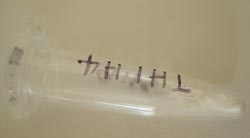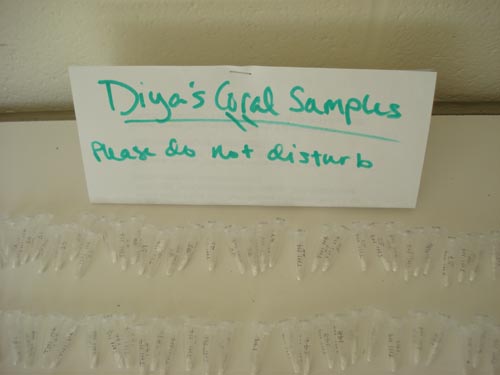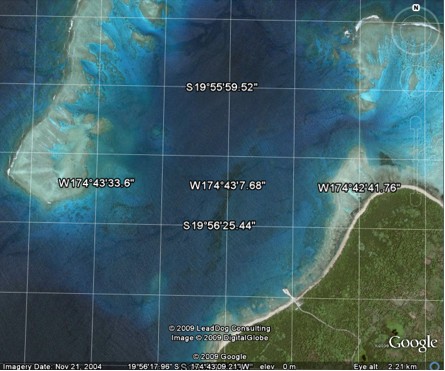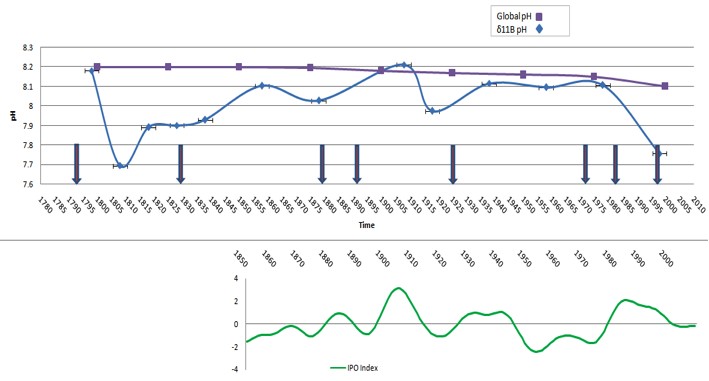

 |
 |
| Rows of coral samples organized for cataloging and analysis. | Tonga island of Ha’afera (19°56’S, 174°43’). Site of coral sample collection (Linsley et al. 2008). |
Boron isotopes in the calcium carbonate skeletons of marine organisms record past ocean pH conditions. Reef building corals provide the highest resolution records of past ocean changes and they have been used to study anthropogenic ocean acidification from the pre-industrial era to the present. However, corals from certain settings likely have recorded predominately local reef conditions rather than open ocean conditions, and pH reconstructions from boron isotopes in corals thus have yielded conflicting results. This project used boron isotope analyses to construct a seasonal and long-term pH record from a Tonga Porites coral. Both the 2-year seasonal record and the long-term record from 1796 to 2000 showed variations in pH ranging from around 7.7 to 8.2. These variations, which may arise from a variety of local oceanographic phenomena, mask the global signal of ocean acidification.
 |
|---|
The top graph charts estimated global seawater pH against seawater results from Tonga Porites coral samples as derived from δ11B using the empirical calibration of Hönisch et al. (2004). Horizontal error bars represent 5-year span of each averaged value. The arrows represent very strong ENSO events (Quinn, 1992). Estimated global pH is from 1995 IPCC Report on Global Climate Change.The lower graph of Interdecadal Pacific Oscillation (IPO) index is from Dr. Chris Folland’s Time Series (2008). IPO describes Pacific-wide low-frequency sea surface temperature variations that switch back and forth from warm to cool every 15-30 years. On the 'y' axis, when the IPO is in its negative or cool phase, the western Pacific warms, and when in a positive or warm phase, the western Pacific cools. This local oceanographic phenomena may contribute to masking the global signal of ocean acidification. |
Go to Science Research Projects.
Go to Learning Objectives of Research Project.
Return to E&ESJ home page.
Last updated: 8 January 2001, KAK.